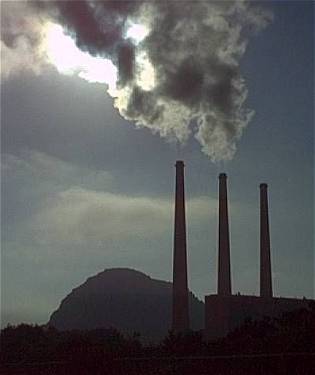Current Uses for Static Electricity

Smoke stack pollution control
Factories use static electricity to reduce pollution coming from their smokestacks. They give the smoke an electric charge. When it passes by an electrode of the opposite charge, most of the smoke particles cling to the electrode. This keeps the pollution from going out into the atmosphere.

Air fresheners
Some people purchase what are called air ionizers to freshen and purify the air in their homes. They work on a similar principle as the smokestack pollution control. These devices strip electrons from smoke molecules, dust particles, and pollen in the air, just as what happens in creating static electricity.
These charged dust and smoke particles are then attracted to and stick to a plate on the device with the opposite charge. After a while, much of the pollution is drawn from the air.
Since charged particles will also stick to neutral surfaces, some of them can stick to the wall near the ionizer, making it very dirty and difficult to clean.

Xerography
Your photocopier or Xerox machine uses static electricity to copy print to a page. This is done through the science of xerography.
One version gives ink an electrical charge so that it will stick to the paper in the designated areas. Another version of a photocopier uses charges to stick the ink to a drum, which then transfers it to the paper.
Painting cars
Some automobile manufacturers use static electricity to help them paint the cars they make. The way this works is first they prepare the car's surface and put it in a paint booth, next they give the paint an electrical charge, and then they spray a fine mist of paint into the booth.
The charged paint particles are attracted to the car and stick to the body, just like a charged balloon sticks to a wall. Once the paint dries, it sticks much better to the car and is smoother because it is evenly distributed
